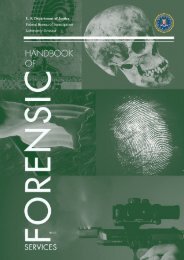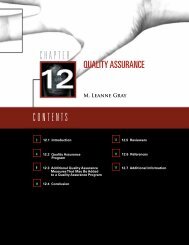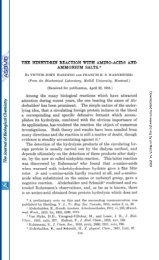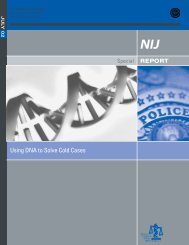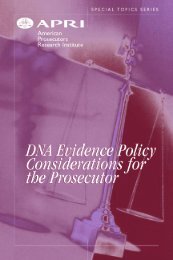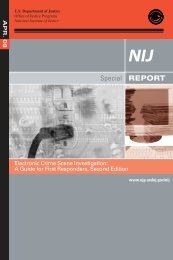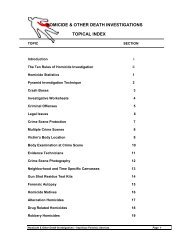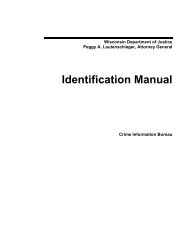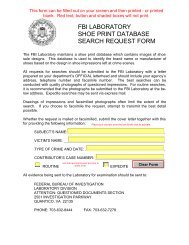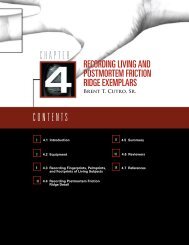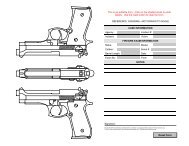Mass Fatality Incidents: A Guide for Forensic Identification
Mass Fatality Incidents: A Guide for Forensic Identification
Mass Fatality Incidents: A Guide for Forensic Identification
- No tags were found...
You also want an ePaper? Increase the reach of your titles
YUMPU automatically turns print PDFs into web optimized ePapers that Google loves.
SPECIAL REPORT / JUNE 05III. Return of Personal EffectsPrinciple. <strong>Mass</strong> fatality incidents produceitems physically on the human remains(associated) and items not directly on butadjacent or within close proximity to thehuman remains (unassociated). Associateditems accompany the remains to themorgue. The medical examiner/coroner isexpected to document these items, applythem toward the identification process ifrequired, and facilitate their return. Themedical examiner/coroner also is expectedto implement a mechanism to safeguardcash and valuables.Procedure. The medical examiner/coroneris expected to accomplish and documentthe following to ensure the chain ofcustody—A. Release associated/unassociated personaleffects to the agency designatedto receive those effects:1. Follow existing local protocol governingthe release of personaleffects if no such agency exists.2. Consider legislation such as theAviation Disaster Family AssistanceAct of 1996, where applicable.B. Release unclaimed personal effectsto the agency designated to receivethose effects or dispose of themaccording to existing local protocol.Summary. Treat all recovered personaleffects with care because of their importancein the identification process as wellas their intrinsic value to the families.IV. Special ConsiderationsPrinciple. <strong>Mass</strong> fatalities produce uniquechallenges that the medical examiner/coroner should address when coordinatingthe disposition of remains and personaleffects.Procedure. The medical examiner/coroneris expected to consider the following potentialissues and consult with appropriatespecialists as required—The medical examiner/coroner is expected toconduct regular meetings with those assistingwith the identification of the deceased to ensureconcordance and resolve any discrepanciesbe<strong>for</strong>e the remains are released.A. Review the work of each <strong>for</strong>ensicidentification team be<strong>for</strong>e releasingremains to the legal next of kin.B. Validate and consolidate all missingpersons lists (e.g., flight manifests,hotel registries, and employee lists).C. Understand the legal issues (e.g.,international law and treaties, maritimelaws, health regulations, and hazardousmaterials [HAZMAT] protocols).D. Respect religious and culturalconsiderations.E. Identify the legal next of kin accordingto State and territorial law.Summary. Legal, cultural, and operationalconcerns require evaluation of each massfatality incident from many differentperspectives.V. Archiving RecordsPrinciple. The medical examiner/coroneris expected to keep all records and supportingdocuments pertaining to the recovery,identification, and disposition of remainsand personal effects <strong>for</strong> future referenceas required by statute.Procedure. The medical examiner/coronercan ensure the appropriate storage, security,preservation, and retrieval of recordsand supporting documents by—46




